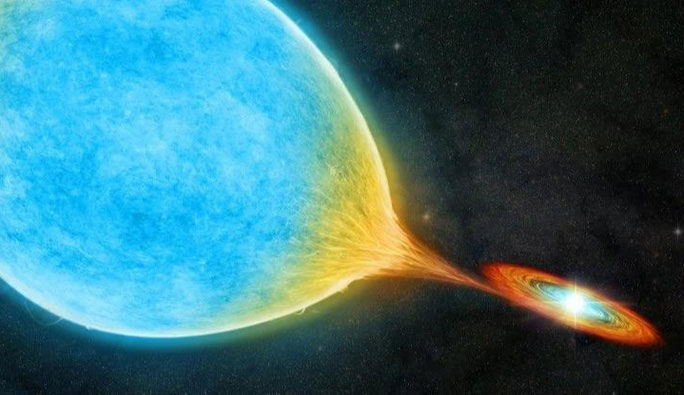Scientists have finally observed two special objects that explain the bizarre stars resembling ghosts – a unique evolutionary step in binary star systems.
According to Science Alert, the new study focuses on special white dwarf stars. When stars like the Sun exhaust their energy, they will flare up into red giant stars, and then collapse into a tiny object the size of Earth, but averaging 1.4 times the mass of the Sun.

White dwarfs in binary star systems may be vampires, but they can also become victims of their companions – (Photo: Harvard & Smithsonian Center for Astrophysics)
However, sometimes scientists encounter a form of strange white dwarfs, only 1/8 to 1/3 the mass of the Sun, as if they have been hollowed out by some monster. They are called ELM. This completely disrupts previous astronomical theories, as for a star to lose so much mass, it would require a much longer time than the current 13.8 billion-year lifespan of the universe. Thus, ELM seems to come from an older universe, causing significant confusion among scientists.
Using data from the two telescopes, Gaia and Zwicky, a research team led by astronomer Kareeem El-Bardry from the Harvard & Smithsonian Center for Astrophysics selected 50 white dwarfs in a transitional phase. Subsequently, with the Shane Telescope at Lick Observatory, they further narrowed it down to 21 stars that were the most favorable for observation.
Previously, scientists had noted that white dwarfs in binary star systems are often “vampires”, continuously siphoning material from their companions until both explode – one due to depletion and the other “bursting at the seams.”
However, this time, astronomers observed a reverse process: some white dwarfs, upon reaching a certain level of “fullness” but before they could explode, were… devoured by their companion star. The companion star could sometimes be so powerful that it caused the white dwarf to lose more material than it had absorbed, turning it into a true ghost – an extremely lightweight stellar corpse.
The research has just been published in the Monthly Notices of the Royal Astronomical Society.


















































